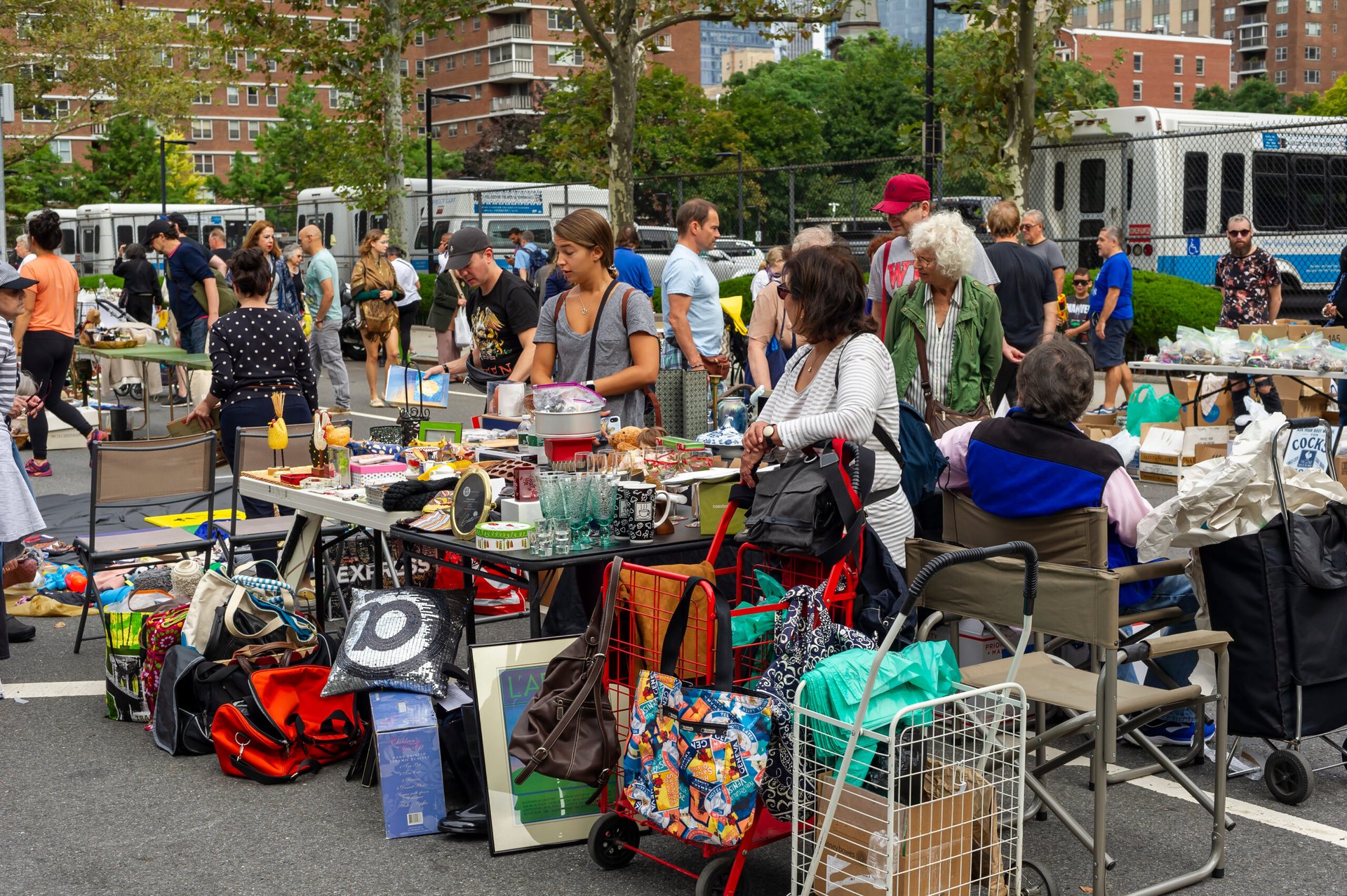
Shopping thrift stores, flea markets and estate sales can be overwhelming. With the sheer volume of stuff, how do you know where to start? How do you spot gems amid all the junk?
As a professional reseller who has been combing through thrift stores for the better part of 30 years, I can help. If you’re ready to cut your shopping time in half, score bigger bargains or walk away with brag-worthy finds you can flip for cash, read on.
From hard-to-find household items to resale moneymakers, everything featured in my “Thrift Shop Like a Pro” series qualifies as a BOLO (“be on the lookout” for) item. When you find it, buy it!
Featured find: Ozark Roadside Tourist Pottery
A few summers ago, I stopped at a yard sale near Austin, Texas. Inside a massive metal barn, I saw wall-to-wall tables, shelves and boxes filled with my favorite yard sale inventory — random junk.
One of many items I purchased that day was an oddly heavy flower pot glazed in blue and white swirls. I didn’t know a thing about it, but for $3, I followed a vague hunch that it might be something special.
That weird little pot turned out to be a piece of Ozark Roadside Tourist Pottery, a category of souvenir pottery sold to travelers in the 1930s and early ’40s.
Sometimes called Ozark mountain pottery, Ozark drip or swirl pottery; Ozark Roadside Tourist Pottery was the brainchild of Harold Horine. He perfected a method for making concrete vessels without a mold. Horine sold a few pots himself under the brand name Como-Craft but soon shifted gears and began licensing his production process to mom-and-pop entrepreneurs across the Western United States.
Of course, Ozark pottery isn’t pottery at all — it’s concrete. And the technicolor, swirly glaze that adorns most pieces isn’t actually glaze — it’s house paint. Horine’s genius was cost control. His production techniques used common, inexpensive materials to create something entirely new.
Soon, tourists all over country were buying their own oddly heavy pots and jars as souvenirs. And for lucky thrift shoppers like you and me, they ended up in every corner of the United States.
Why buy it?
Based on recent sale prices, Ozark Roadside Tourist Pottery is the hot new collectible. Its popularity might be driven by the strong folk art sensibility conveyed in the crude construction and simple “make-do” decorating method. Each piece is unique, and each swirl pattern is one-of-a-kind.
Collectively, Ozark pieces represent a time when the American West was opening up to the masses. With new highways, reliable automobiles, and the first motels dotting the landscape, Americans could travel for pleasure — and collect things along the way. Nearly 100 years later, it’s not surprising that these early totems of our car culture are highly prized.
For resellers, popularity means high pay-outs. On eBay, this 12-inch flower pot sold for $595, and this 4.25-inch bulbous vase sold for $99.96. On Etsy, this 15-inch vase with a very dramatic swirl pattern is listed for $899.95.
What to look for
With so many makers and sellers, Ozark Roadside Tourist Pottery was typically unmarked. The best way to identify a piece is by look and feel.
Ozark pots and vases are heavier and thicker than stoneware. Flick the rim of a piece with your fingernail; you should hear the dull thud of concrete rather than the “ding” of pottery. Painted surfaces should have a matte finish, and on many pots, the paint bleeds over the edge and under the base.
To get the highest prices in the resale market, pay special attention to:
- Color: Certain color combinations sell best. Look for pieces with blue and white swirls or multiple colors (four or more) mixed together.
- Design complexity: The more complex the swirl, the better. Vases and jars with lots of visual movement are prized by collectors.
- Size: Bigger is better when it comes to Ozark Roadside Tourist Pottery. Since small pieces were easier for travelers to stow in the car, more were made. Larger examples are scarcer and more valuable.
- Condition: Concrete is porous. Many Ozark pots have stains and paint loss from decades of weather exposure. While some damage is to be expected, pristine pieces sell best.
Pro tip: Estate sales are great places to score a piece of Ozark. If the hosts don’t mind, go off-track. Look for pots in old sheds, overgrown gardens and back porches.




Add a Comment
Our Policy: We welcome relevant and respectful comments in order to foster healthy and informative discussions. All other comments may be removed. Comments with links are automatically held for moderation.